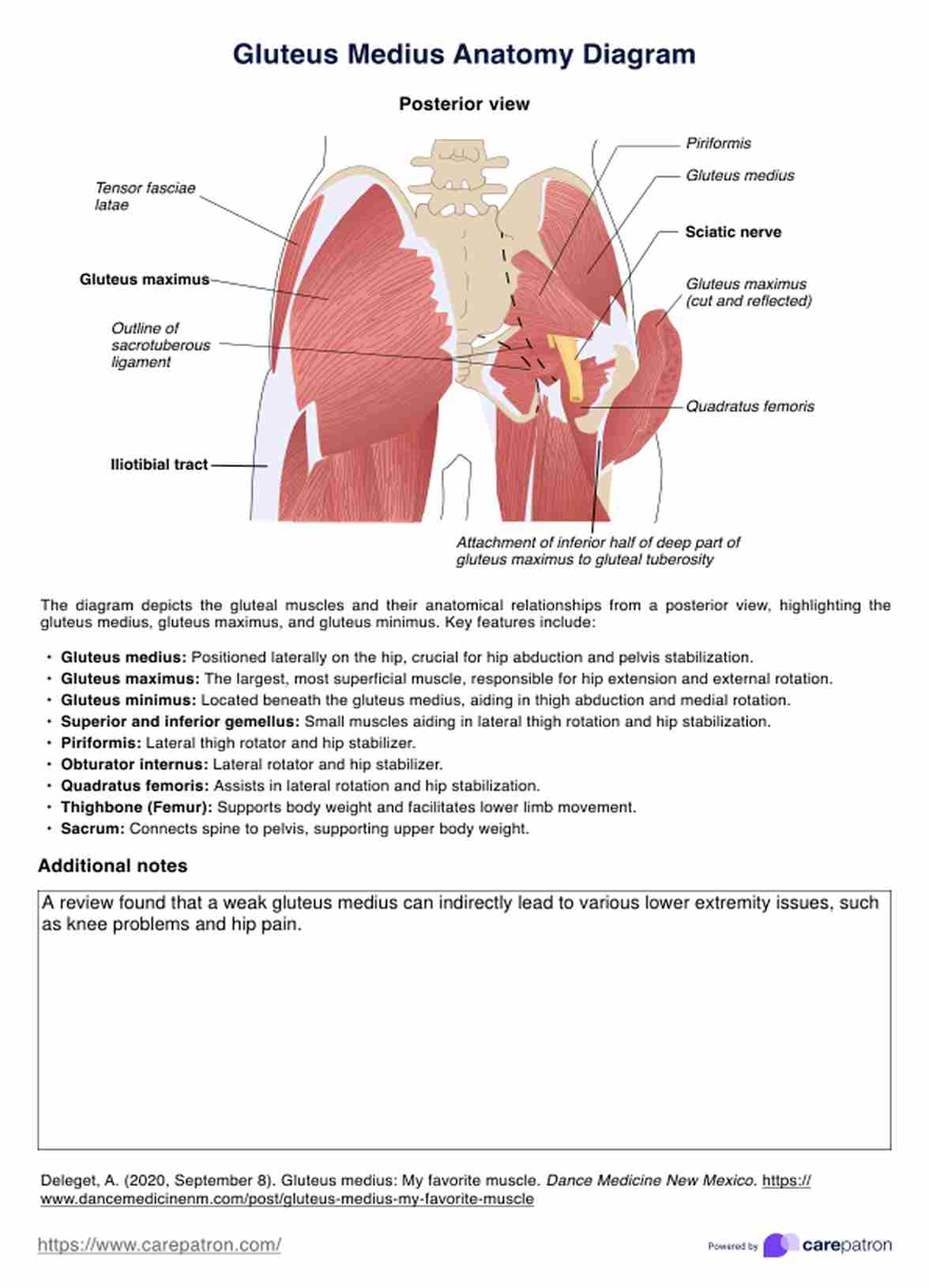The gluteus medius and minimus muscles are crucial hip abductor muscles. They significantly stabilize the pelvis and lower limb during walking, running, and single-leg activities.

Gluteus Medius Anatomy Diagram
Download our free Gluteus Medius Anatomy Diagram for detailed insights into the gluteus medius, its function, and surrounding structures. Ideal for healthcare professionals.
Gluteus Medius Anatomy Diagram Template
Commonly asked questions
The superior gluteal nerve innervates the gluteus medius muscle and the gluteus minimus and tensor fasciae latae muscles. This nerve arises from the posterior divisions of the L4, L5, and S1 nerve roots.
Understanding the anatomy of the gluteal region is vital for hip joint surgeries because it helps surgeons avoid critical structures such as the superior and inferior gluteal nerves, the superior gluteal artery, and the gluteus maximus and minimus muscles.
EHR and practice management software
Get started for free
*No credit card required
Free
$0/usd
Unlimited clients
Telehealth
1GB of storage
Client portal text
Automated billing and online payments











